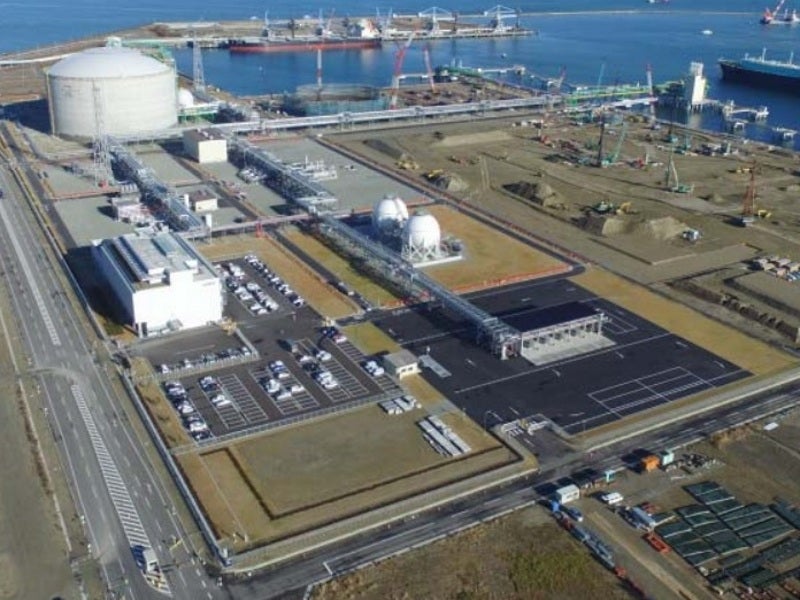The Soma LNG terminal was the first liquefied natural gas (LNG) import terminal to be built in Fukushima Prefecture of Japan.
It was brought into commercial operations with an initial regasification capacity of 1.3 million tonnes per annum (Mtpa) in March 2018, while the total LNG storage capacity at the terminal was doubled to 460,000kl in August 2020.
The onshore LNG terminal is spread over a 20ha-site at the No.4 wharf of the Soma Port in Shinchi Town in Fukushima Prefecture, Japan.
The terminal receives LNG from overseas through ocean-going vessels and supplies the regasified LNG to the Niigata-Sendai gas pipeline through the 40km Soma-Iwanuma gas pipeline.
JAPEX was contracted by Fukushima Gas Power (FGP) to supply feed gas to the adjacent 1.18GW Fukushima gas-fired power plant, in which JAPEX holds a 33% stake.
Additionally, the gas from the Soma terminal is also supplied to local power plants as well as to the Yufutsu LNG receiving terminal at Tomakomai-city on northern Japanese island of Hokkaido via coastal LNG vessels.
Construction schedule
The Soma LNG terminal project was developed in two phases. The phase one was estimated to cost £361m ($480m), for which the final investment decision was taken in November 2013.
The phase one construction began in November 2014 and it involved the development of a 230,000kl LNG storage tank along with the associated regasification facilities and connecting pipeline.
Commissioned in December 2017, the terminal received the first LNG supply of 60,000 tonnes (t) from Malaysia through Petronas’ Puteri Intan Satu LNG tanker. The LNG supply was made as a result of JAPEX’s acquisition of 10% interest of the natural gas blocks in North Montney, British Columbia, Canada, as well as a 10% interest of the Pacific NorthWest LNG Project, both of which are undertaken by Petronas.
JAPEX built another storage tank with additional regasification equipment as part of a contract awarded by FGP. Construction on the second phase was initiated in April 2017, while commercial operations began in tandem with the commissioning of the second generating unit of the Fukushima gas-fired power plant in August 2020.
Soma LNG terminal details
The LNG import terminal consists of two ground-type storage tanks of 230,000 kilolitres (kl) capacity each. The tanks store LNG offloaded from ocean-going LNG tankers docked at the Soma Port.
The storage tanks are made of pre-stressed concrete, which offers superior resistance against earthquakes and tsunamis and prevents crack by tensile stress.
The terminal also features a receiving berth for large LNG ocean-going ships having a capacity of 125,000m³ to 210,000m³ and a shipping and receiving berth for 2,500m³ class LPG coastal vessels. It also has an offloading facility for 4,800m³ class coastal vessel and for LNG tank trucks.
Contractors involved
JGC was awarded the engineering, procurement and construction (EPC) contract for the Soma LNG import terminal in October 2014.
Japan Oil Engineering was appointed as the health, safety, and environment (HSE) engineer for the Soma LNG terminal project.
Penta-Ocean Construction constructed the LNG berth at the terminal, while the main construction contract for the LNG storage tank was awarded to Ishikawajima-Harima Heavy Industries (IHI).
Nippon Steel & Sumitomo Metal (NSSMC) provided 3,500t of 7% nickel thermo mechanical control process) steel for the construction of the storage tank, as part of the contract awarded in June 2014.





